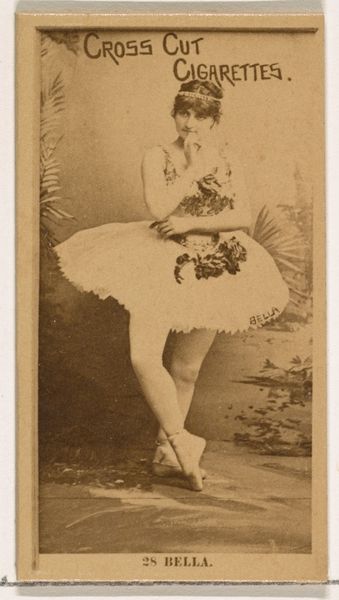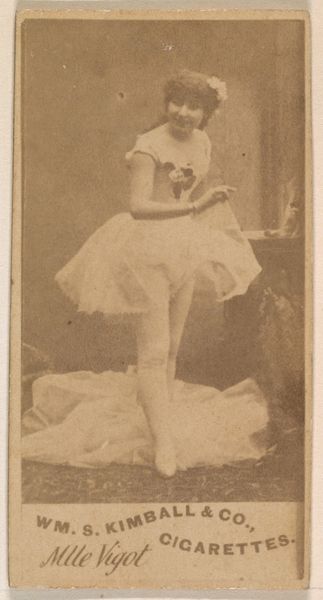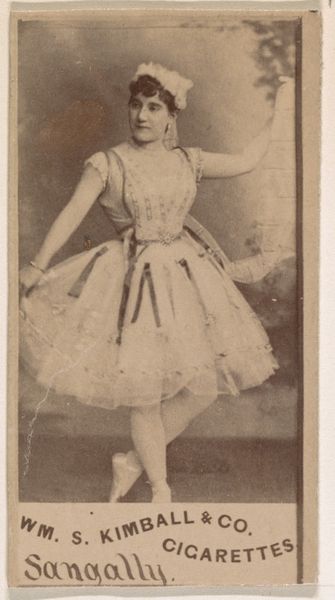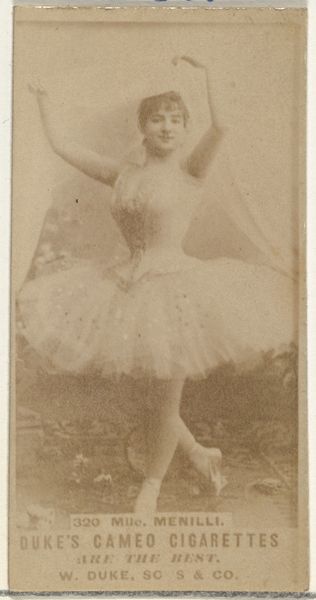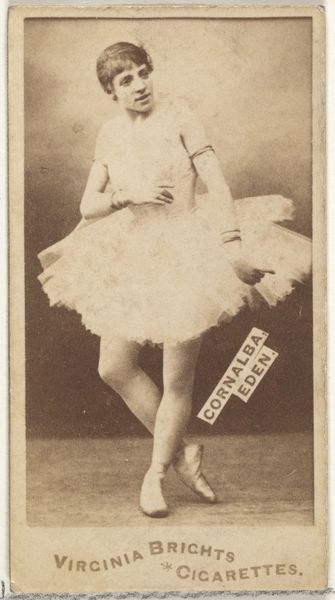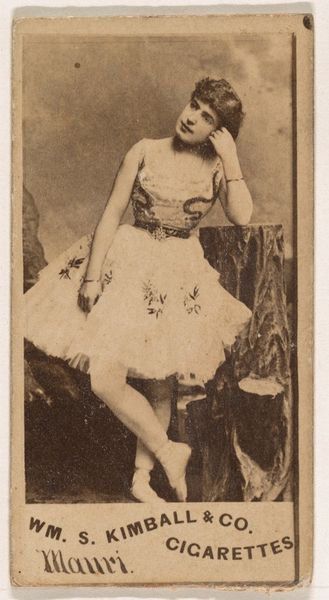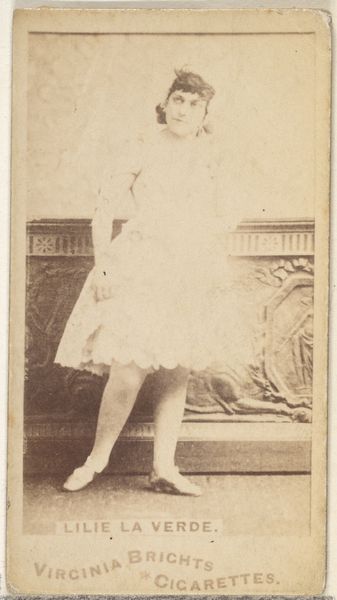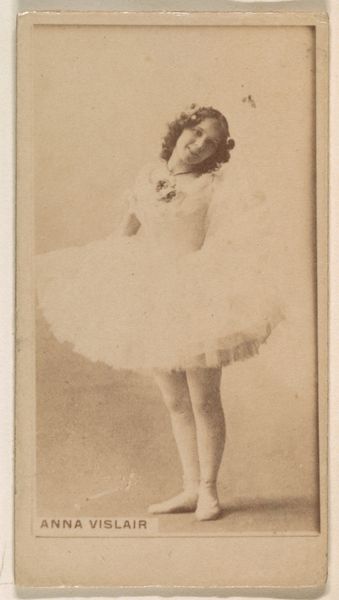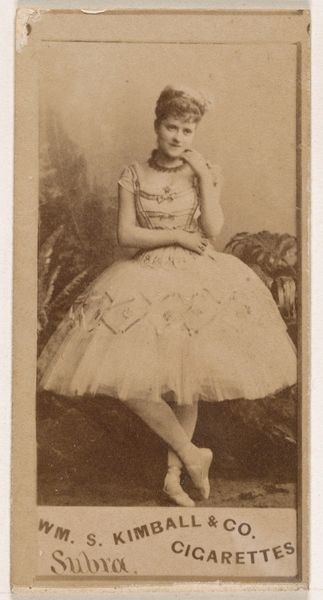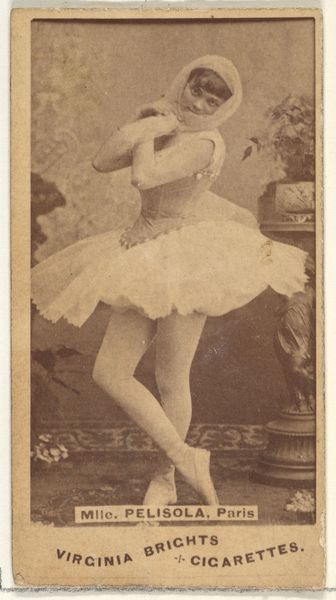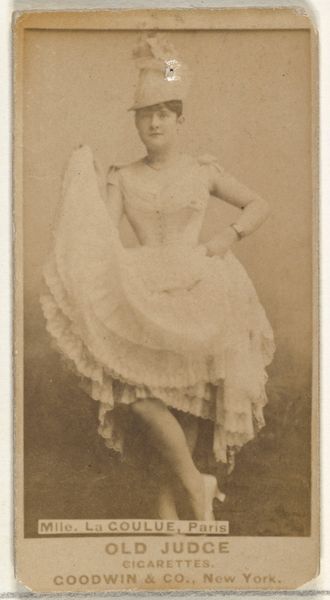
Card Number 108, Mlle. Bonfanti, from the Actors and Actresses series (N145-2) issued by Duke Sons & Co. to promote Cross Cut Cigarettes 1880s
0:00
0:00
drawing, print, photography
#
portrait
#
drawing
#
aged paper
#
toned paper
#
16_19th-century
# print
#
figuration
#
photography
#
orientalism
#
19th century
#
genre-painting
#
profile
Dimensions: Sheet: 2 5/8 × 1 7/16 in. (6.6 × 3.7 cm)
Copyright: Public Domain
Curator: At first glance, there's a sort of ethereal, delicate quality. It reminds me of an old photograph, faded sepia tones lending a sense of nostalgia and faded glamour. Editor: This is "Card Number 108, Mlle. Bonfanti," one of the actors and actresses series issued by W. Duke, Sons & Co. in the 1880s to promote Cross Cut Cigarettes. The photograph is now part of the collection at the Metropolitan Museum of Art. Curator: It’s fascinating how this small object reveals so much about late 19th-century production! Imagine the industrial processes necessary for mass-producing these cards—the photography, printing, and distribution networks all tied to the rising popularity of tobacco. Editor: Absolutely. It positions the commodification of performance alongside broader narratives of labor, gender, and class. Bonfanti, the celebrated ballerina, becomes a vehicle for selling cigarettes. It highlights the ways female performers' bodies were, and often still are, instrumentalized for marketing purposes. The male gaze is undeniable, even in profile. Curator: It really highlights the connections between "high" culture – ballet – and the burgeoning mass consumer culture. How was this imagery distributed, and who consumed these products and their promotional material? The card would be almost ephemeral, mass-produced, and circulated amongst mostly male consumers. Editor: That is an important point. It circulated within specific, gendered spaces of leisure and consumption. Consider the colonial undertones of tobacco use at that time, linking back to narratives of power, exploitation, and the exoticization of other cultures. How complicit are we today when our leisure also perpetuates inequalities? Curator: And thinking materially, the toned paper is quite thin. Was that cheap paper stock intentional? How did its degradation influence its exchange value, and what sort of affect does it hold today as it lingers on after a century of material exchange? Editor: Precisely! It is so important to be mindful of all of these considerations and more to reveal how this little advertising card carries a complex history with significant cultural, social, and economic meaning far beyond the boundaries of its small physical form.
Comments
No comments
Be the first to comment and join the conversation on the ultimate creative platform.


